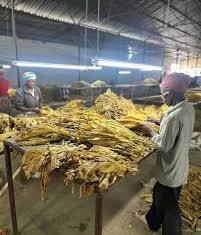By Allanviny Murozvi
Land is the foundation of life and identityWhy Zimbabwe Needs Land Tenure Reform for most Zimbabweans. It was the rallying point of the liberation struggle and remains the core of the country’s political economy. Yet, decades after independence, land governance remains plagued by elite capture, legal ambiguity, and state dysfunction. The people who sacrificed for the land now find themselves at the mercy of powerful interests—both local and foreign—that use state machinery to displace them in the name of “national projects.”
The Case of Chipinge District: A Microcosm of a National Crisis
Chipinge District has become a stark example of how opaque land governance harms communities. In Makiwa, Masireni, and Jiya villages, 88 families face eviction from 258 hectares earmarked for gold and copper mining. In Maunganidze, Munyokowere, and Mahachi, villagers are victims of speculative land acquisition by local state actors. In Chipinge South, the expansion of the Green Fuel ethanol project continues to displace communities from their ancestral land—formerly Ndowoyo Tribal Trust Lands—without transparent consultation or fair compensation.
These displacements are not isolated incidents; they are part of a broader trend where “national projects” in mining, agriculture, and urban expansion take precedence over the rights of indigenous inhabitants. This reflects a broken promise of tenure security and a systematic erosion of customary land rights.
The Problem with Top-Down Reform
The government’s presidential land tenure implementation committee has proposed giving agricultural land titles—but with a cost to those who already sacrificed for it. This approach is mired in constitutional controversy, with the Zimbabwe Land Commission constitutionally mandated to handle tenure security. Meanwhile, laws on compensation for compulsory acquisition remain opaque, with no clear formula or transparent enabling legislation.
Top-down reform has repeatedly failed because it is susceptible to elite manipulation. Politically connected individuals and corporate investors have far more influence over decision-making than rural communities. Traditional leaders, once custodians of communal land, are often co-opted, leaving ordinary villagers without genuine representation.
Why Reform Must Come From Below
True tenure reform must be rooted in the lived realities and decision-making traditions of communities themselves. Living customary law—when not distorted by political or corporate influence—offers a framework for local accountability, participation, and consensus-building. Communities understand their land histories, boundaries, and usage patterns far better than distant bureaucrats or opportunistic investors.
Reform from below means:
Recognizing communities as primary custodians of their land, with decision-making power on whether to lease, sell, or preserve it.
Embedding compensation rules in law that are transparent, fair, and accessible to all, with independent oversight.
Strengthening social cohesion so communities can resist divide-and-rule tactics along partisan, class, or gender lines.
Building social land movements that connect local struggles—like those in Chipinge, Dinde, Chiadzwa, and Chilonga—into a national force for democratic accountability.
Land, Power, and Democracy
There is no contradiction between democracy and authentic customary practice. Both systems value local decision-making, participation in debate, consensus-seeking, and mechanisms of accountability. Reform from below would bridge these systems, ensuring that land governance protects the collective rights of communities while upholding constitutional principles.
In the context of state dysfunction, only strong, organized, and informed communities can safeguard land rights against elite capture. Tenure reform from below is not just a legal or policy necessity—it is a survival imperative for rural Zimbabweans.
Allanviny Murozvi is a Human Rights Defender, Researcher & Local Governance Practitioner based in Chipinge District and writes in his own individual capacity.

